-
Posts
52 -
Joined
-
Last visited
Content Type
Profiles
Forums
Store
Help Articles
Posts posted by Morkai
-
-
Yeah, cross-contamination aside, it's a pretty good method.
Perhaps I totally missed it, but what are you referring to? The Keller method?
-
We used a simple carving kit we got from Walgreens for $3.99. Seemed to do the trick. This is our first year really carving, and the first turned out well I think.
For all you Breaking Bad fans....

-
 2
2
-
-
Unfortunately, I don't have a photo of all the elements together, but here are a few individual shots of dishes that made up for a great, over-indulgent recent meal. Tomahawk ribeye, fondant potatoes, and grilled prosciutto wrapped asparagus.


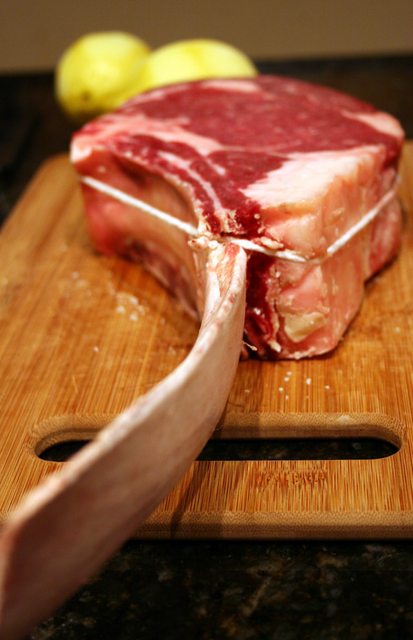
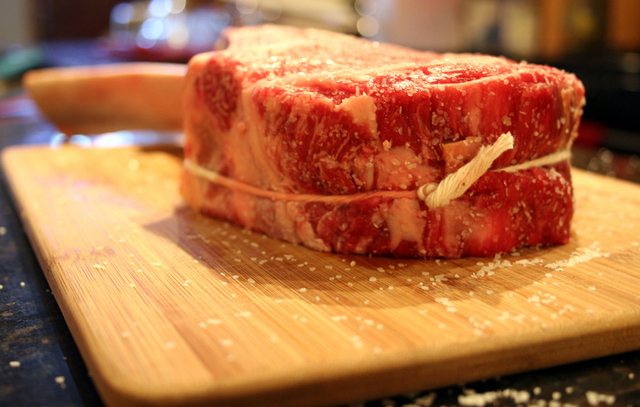
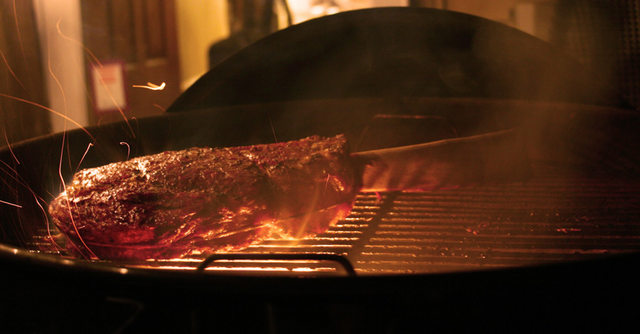
-
 4
4
-
-
A dinner from a couple of weeks ago. Heirloom tomato caprese and chicken marsala.
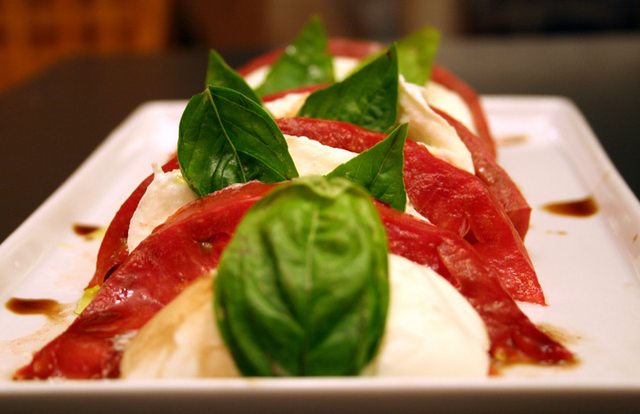

-
 2
2
-
-
Oh man, too bad we're on a meat-free week. That porchetta and fried chicken look incredible.
We made crab cakes the other night with a Mediterranean salad. Tried to model them after the crab stand Faidley's in Lexington Market in Baltimore. As little filler as possible, saltines for binding.
Yes, those are frozen curly fries. What can I say? We had a craving.
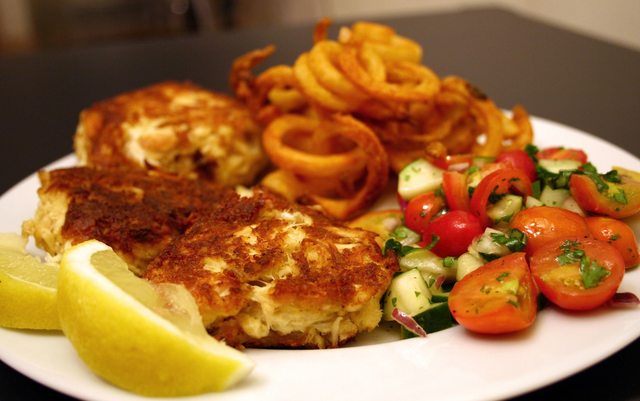
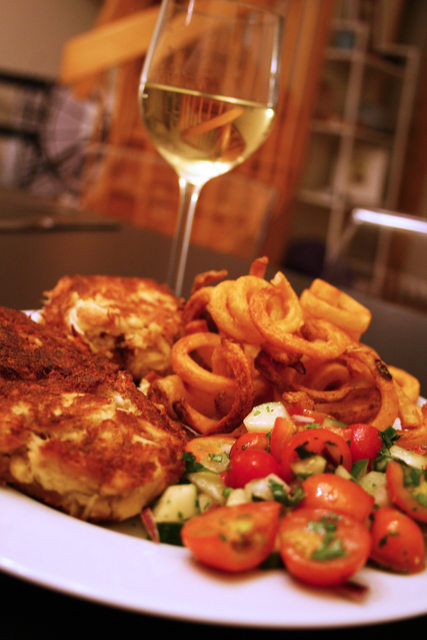
-
Made an "art of the choke" the other night after browsing the Cynar thread. We really enjoyed it - not sure I understand those who think it tastes like mouthwash.
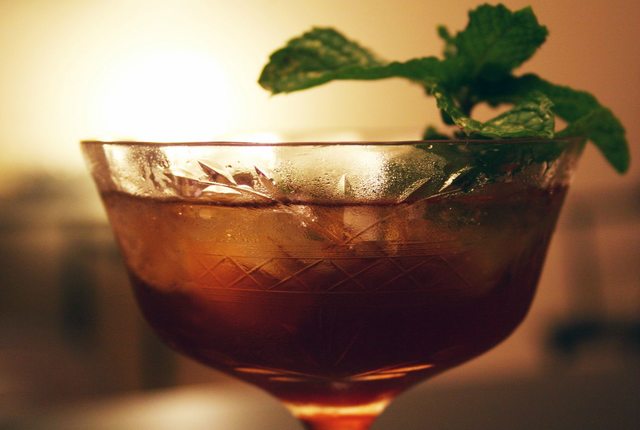

-
 1
1
-
-

Dinner from a few weeks ago - Herb crusted rack of lamb with a mustard glaze.
-
 1
1
-
-
Another dish I enjoyed while in Singapore and in restaurants. Now, I've made it at home. So simple, light, and a lovely change from heavier meals.
Hainanese Chicken Rice
Had 3 kinds of dips: oyster sauce, sriracha, and ginger, chicken fat, and a bit of salt and sugar in hot oil. This developed some crunchy clumps which were delighful to crunch on along with the silky mois6t5 texture of the chicken
I particurly enjoyed the "burnt rice" on the bottom of the pot, softened with more of the chicken stock!
I loved this dish when I had it abroad. I always assumed it would be rather involved to make at home. How was it? Did you follow a recipe or give it a go on your own?
-
Finally make Prawncracker's miso sesame sauce today! Really delicious, sweet and nutty. Cannot wait for meat tomorrow. So I use some leftover sourdough to make a veggie pizza, using that miso sauce. How can I say that.... I planned to add some cilantro on top. But I cannot wait after it came out from the oven....
I feel so guilty to eat the whole one for dinner......
I would love to make this sauce. Did Prawncrackers post it?
-
Tonight I am serving a "money muscle" from a Boston butt that will have been cooked sous-vide at 175F for about 12 hours. It was seasoned with salt and a little sugar (a la Momofuku) before going into the bath. Afterwards I plan on either searing on the grill or quickly deep frying. Not sure which yet.
I am asking if anyone has a quick sauce to recommend? The texture is much like pulled pork, only more tender, if possible. I have done this once before with a honey-sherry glaze, but am looking for something different. Any suggestions?
Also, here is a picture of the "money muscle" for those who are curious.

-
Served over Japanese rice with miso aubergine and that same sesame miso sauce from my last post (a real favourite).
Now you have me curious. That sauce looks incredible!
-
Made the white chicken stock last night. It's certainly good - it has a nice clean taste, texture and look. Very bright, if not a tad lacking in flavor. Has anyone else made it?
I think the brown chicken stock will be a bit more rich, and will try that next time.
-
I have an update on the longevity of the SideKIC. I have been using the SideKIC (the second revision, I believe) for about 4 months or so with pretty good success, however this was almost exclusively with shorter cook times. Last night I put in some short ribs at 132 F to go for 72 hours at about 8 P.M. I use a set-up identical to what Chris Hennes uses above (the exact plastic tub with the top cut out to reduce evaporation). This morning at 9 A.M. I awoke to find that the SideKIC had broken. The heating element seems to be working, but the pump has ceased to pump water.
A pretty big disappointment as the water level never went below the recommended line. I have no idea what would cause the pump to malfunction. Anyone have any ideas or is this thing just dead in the water (pun intended)?
Regardless, I would be very wary of using the SideKIC for longer or overnight cooks.
-
Baked Macaroni and Cheese (p. 312)
I've made the original "world famous" Modernist Mac & Cheese many times since the original volumes came out, and I've finished it in the oven on a few occasions following steps similar to what they describe in MCaH. The main difference is that I typically cook mine more on the stove and less in the oven. I also have never made a "cheese crumble" for the topping (usually I just use breadcrumbs and shredded cheese). The cheese topping was nice, I thought: crunchier than just breadcrumbs, with more flavor. It's another one where I didn't like the taste on its own, but as a topping for the mac and cheese it worked. I personally thought the cheese for the M&C itself was too thick, with an unpleasantly viscous mouthfeel. In my opinion the cheese should flow a little, even when it's cooled down after a few minutes out of the oven: this started to get overly thick after a short time out of the oven. Really, I'm not sure it was worth jumping through the par-cooking and cooling hoops, I think I'll probably stick to simply broiling a topping for a couple minutes using just-slightly undercooked (and not chilled) pasta, with a thinner cheese sauce.
Is the MCaH macaroni and cheese recipe different than the original MC version?
-
I recently purchased the Iwatani torch and have had a good time playing around with it.
However, one thing that has been disappointing is it's ability to sear steaks. I have a feeling it's more my technique than a deficiency in the product.
I always seem to end up burning little bits of the steak before any sort of crust develops. I have tried torching from further away, but then very little happens. The bits of fat on the steak also burn far more quickly than the rest of the meat.
Anyone have any steak-searing advice?
Other than that, what uncommon uses have you found for the torch?
-
Hi Morkai,
Since there seems to be quite a bit of confusion, I thought perhaps that I might chime in. This is mostly a review of the food safety section of my guide and of my IJGFS article.
Let's go through things step-by-step:
- You buy meat from a trusted source that doesn't have a strong smell, isn't slimy, and is before the best-by or use-by date. We hope that this will keep the number of microorganisms low, say less than 10/g of each of the Salmonella species, Listeria monocytogenes, etc. and less than 100/g of Clostridium perfringens (cf. Snyder 1995). We want this because it takes from 104 to more than 1010 of the different Salmonella species to make a healthy person ill; an immune compromised person needs as few as one to ten infective, active pathogens to make them ill.
- You thoroughly wash your hands, using the double-wash method, before you start cooking or after you use the toilet. This is important because pasteurization for the Salmonella species, the pathogenic strains of E. coli, and Listeria monocytogenes does not reduce viruses like Hepatitis A or norovirus to a safe level. (The double-wash method first uses a brush with soap to clean under the fingernails, followed by a rinse, followed by more soap that's worked into a lather, another rinse, and drying with paper towels.)
- You seal the meat in pouches, using the water-displacement method or using a vacuum sealer. Both these methods make it so there is little or no air between the food and the pouch and so allows for the efficient transfer of heat from the water to the food. I always assume there's enough oxygen for the bacteria that need it and that there isn't any oxygen for the bacteria that need that, because I can imagine cases where either is true.
- You put the meat in the pre-heated water bath. If your not pasteurizing, you want to keep it above 27°C/80°F for less one hour (FDA, 2011). If you're pasteurizing, you want to limit the amount of toxins that are formed and aren't destroyed by heating: so you want to keep it above 21°C/70°F and below 48°C/118.4°F for less than 2 hours (FDA, 2011). This is equivalent to requiring that the core of the food reaches 54.4°C/130°F within six hours. Now you hold the food at or above 52.3°C/126.1°F until any active pathogens have been reduced to a safe level. For healthy people, a 3-log10 reduction of the Salmonella species is generally recommend; for immuno-compromised people, a 7-log10 reduction is generally recommended. You can hold it here indefinitely from a food safety perspective or an optimum amount of time (give or take 10%) for texture.
- You then serve the food or chill the food rapidly to limit sporulation of Clostridium perfringens (since it creates its toxins while sporulating); cooling to 4.4°C/40°F within 11 hours is generally recommended. Given the small size of your short-ribs, refrigerating them likely accomplished this.
- Now you can refrigerate or freeze the food. You can freeze indefinitely (though taste is usually degraded after 6 to 18 months). When refrigerating, you want to limit spore outgrowth and subsequent multiplying; the limiting pathogen is Clostridium botulinum and the recommended storage times are: below 2.5°C/36.5°F for up to 90 days; below 3.3°C/38°F for less than 31 days; below 5°C/41°F for less than 10 days; or below 7°C/44.5°F for less than 5 days.
- Now you reheat so that the food is above 21°C/70°F and below 48°C/118.4°F for less than 2 hours (FDA, 2011) to limit toxin formation by Clostridium botulinum, Bacillus cereus, and Clostridium perfringens.
Thank you for the detailed account. I had been reading that Clostridium botulinum does not like acidic or salty environments. Considering the marinade is heavily sugared, has a good bit of soy sauce, is it reasonable to assume this is an extra degree of prevention in toxin propagation?
Also, you say that lowering the temperature to 40F within 11 hours is reccomended. What about 44F? I ask because I just checked the internal temperature of one of the ribs, and it stands at 39.5 degrees - I assume this is the temperature of my fridge. Since it's so close, I suppose it's possible the short ribs didn't reach 40F until after 11 hours, but I am by no means an expert on temperature transmission.
- You buy meat from a trusted source that doesn't have a strong smell, isn't slimy, and is before the best-by or use-by date. We hope that this will keep the number of microorganisms low, say less than 10/g of each of the Salmonella species, Listeria monocytogenes, etc. and less than 100/g of Clostridium perfringens (cf. Snyder 1995). We want this because it takes from 104 to more than 1010 of the different Salmonella species to make a healthy person ill; an immune compromised person needs as few as one to ten infective, active pathogens to make them ill.
-
Hmm. I am still not convinced. Even though the marinade was slightly acidic and had sugar and salt in it (through the soy sauce), I am not sure that the risk is nullified - considering the relatively short time in the ice water chill. I couldn't find much regarding the estimated amount of oxygen still in the bag using the water displacement method, so I don't think I can be certain that the environment isn't anaerobic enough to prevent growth.
-
Don't worry about it. From a bacterial standpoint, there is still way too much oxygen left over using the displacement method to allow c-bot to propagate.
I wondered if this was the case. I didn't know if botulism was only a problem concerning completely vacuum sealed sous vide foods, or if water displacement kept too much oxygen inside.
If it had been vacuum sealed, would it be a problem? I think the issue that concerns me most is not leaving it in the ice bath long enough.
I would also like to add in - They were bagged with a liquid that was made up of water, soy sauce, white sugar, and a touch of apple and pear juice. It would also seem like this liquid would be so acidic that it would prevent the growth of c.botulinum, but I am not totally sure.
-
I am having a dilemma with some short ribs I have been cooking. I was hoping anyone with the appropriate knowledge on this board could help me out.
I was cooking some short ribs sous vide at 132F for 72 hours. They were done last night. Each rib was individually bagged using the water displacement method. Though they were done last night, I plan on cooking them this evening. So, last night, I dunked them in an ice water bath, but only for about 15 minutes (They are small rectangles - about 3x2 inches). They felt cool to the touch, and I tossed them in the fridge, and they've been there overnight. I plan on frying the ribs and using the liquid in the bags to make a sauce. However, I am starting to become concerned about botulism. Am I at risk here? I wonder if botulism spores might have developed overnight (they will be in the fridge for about 18 hours total). I am concerned that I did not keep them in the ice bath long enough.
Also, is there a good way to reheat these, assuming they are safe? I am not sure the deep frying will adequately warm them through before they start to burn. If I put it back in a 132F water bath, is that another way to risk bacteria?
Thanks for the help - I'd be disappointed if I needed to toss these, but better safe than sorry I suppose.
-
Beef short ribs: 60C proved to be too high a temperature for beef short ribs. They were nice, don't get me wrong, but I think next time I'll cook them at 56C or 58C. I was following David Chang's recipe from the Momofuku cookbook. I also think that the marinade, which was meant to be reheated and reduced to serve as a sauce, didn't stand up to 48 hours in a plastic bag with a piece of meat. Next time I think I'll make double the quantity of marinade: half will be sealed in with the meat, half will be reserved in the fridge and I'll use that as the sauce. To compensate for the lack of beefiness, I might jack it with a little bit of beef stock. Thoughts?
Save the juices that come out of the packages of meat and steak that you sous vide in a bottle in the freezer. When you need to jack beefiness this stuff can't be beat!
I made the Momofuku short ribs last night. Am I the only one who finds the sauce almost unbearably sweet?
-
Hi Folks,
I just bought a SideKIC immersion circulator and gave it a try on some chicken breast with skin that I purchased from whole foods. I don't have a food vacuum so I used the displacement method. I seasoned it with salt and pepper and cooked it for 1.5 hours at 146.0 degrees. The temperature sensor on the SideKIC didn't match my CDN digital thermometer-- the thermometer read 144.0 degrees in the water bath. I wasn't sure which one was more accurate, so I cooked it a few degrees above the suggested temp (140) to be safe.
When the chicken came out, it seemed to have expanded in size and was overly spongy in texture. I browned it in a cast iron pan but other than the skin it tasted quite bland. It wasn't especially pleasant to eat. Do you think the problem with the texture/taste was that the temperature was too high? Or could it be because I used the displacement method to seal instead of a vacuum?
Thanks for any advice/help!
Hi Josh,
Welcome to eGullet.
The temperature differential that you had shouldn't have affected the breasts.
I've never had meat "expand and become spongy in texture." It almost sounds like you got some water in there and the meat absorbed it but I can't work out how this would happen.
My advice would be to try again but try brining the meat overnight before drying it and sealing it in the bag. This will add flavour if the chicken you buy is bland. Use the water immersion method and be careful that you seal the bag properly.
It may be me but I always take off the skin as it does strange things when cooked sous vide: try it without the skin next time.
The chicken will be much more moist than any that you have had before because it has not suffered from contraction which squeezes moisture out when it is cooked at a high heat.
I recently purchased the SideKIC myself, and have cooked chicken breasts three times with it. I cooked the breasts at 140F (verified with my Thermapen) for 1.5 hours seasoned with salt and pepper, and then quickly seared the skin (or breaded with crumbs and quickly fried). I have to admit I came away each time disappointed.
I don't know if it's because my expectations were too high, but from what I had been reading about sous vide chicken, I suppose I was prepared for an otherwordly experience. I had been reading claims from people that it was the best chicken breast they've ever eaten - fork tender, that you couldn't even discern individual muscle fibers. I remember two specific claims - that chicken cooked sous vide is "mind blowingly incredible" and Kenji from SeriousEats claimed that it was "so soft that teeth were almost unneccesary". I found almost none of this to be true. Sure, it was juicy chicken. Really though, it just tasted like a nice, moist chicken breast - and nothing more. Is there something on the operating end that I am doing in error, or was I simply reading too much into these fantastical sous-vide chicken claims?
-
Count me in for the BBQ Shop. One of the more consistent in quality in my opinion. When the Rondezvous lives up to it's potential it's wonderful, but 75% of the time you'll get something below par in terms of Memphis quality.
-
Tonight for dinner, I am planning on marinating some lamb rib chops in EVOO, garlic, rosemary, a bit of lemon. Then, I plan on drying the chops, seasoning with salt and pepper, and pan searing them in a hot cast iron pan. I was thinking of broiling them, but I find home broiling to be woefully inadequate to the ultra-high BTU versions found in restaurants.
When talking to my father, I found we had a disagreement on the proper way to sear meat. He states that you should always add a small amount of oil (olive or vegetable) to the pan. I claim that the proper method is no oil at all - Dry hot cast iron pan, and add the meat. This way, the meat is actually "searing" to the pan, and releases when ready to flip. To me, if you add oil you are really just lightly frying the meat instead of properly searing it.
Anyone else have any thought on proper searing methods? Anyone noticed a difference in the way the meat comes out with or without oil?
-
Kim, those butter beans look incredible! It reminds me of my childhood. How do you prepare them? We use a ton of butter and chicken stock.



Dinner! 2013 (Part 5)
in Cooking
Posted
Was the "turchetta" difficult to roll? I am thinking of doing this for Thanksgiving, but haven't yet decided. Kenji writes the article as if it's a revelation. Your thoughts?